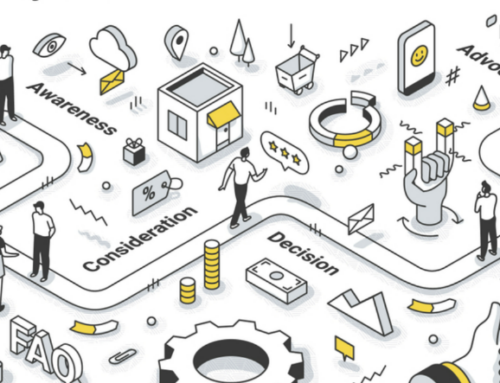Let’s face it: Some banks and financial institutions are (still) rather skeptical about digital transformation.
Even though the COVID situation lead to a “frog leap” in the understanding of digitalization, there are still many “what-ifs?” blocking banks from changing, such us:
• What if we are lost within new processes?
• What if the new ways of digital banking operations are not sufficiently tested and pose a high risk to our operations?
• What if those solutions are promoted by unskilled IT staff?
• What if we lose to competitors in the course of the change?
And there are many more of those what-ifs but the brutal truth that banks must accept is: no pain, no gain.
Positive effects of digital bank strategy
As regards the long-run positive effect of digital-first strategy we can name a few key points:
• Cost saving: No matter if we are talking about operational or process-based expenses, digital-first approach gives banks an opportunity for huge cost savings from switching to paperless processes (and save on paper, warehouses…) to the operational headcount and task optimization.
• Agility and mobility: Here we are talking about advanced forecasting and fast reactions to changes. Banks that fulfil the customer needs faster by implementing the tools and systems that allow them to scale functionalities and add features as fast as possible will gain market advantage.
• Increased efficiency and accuracy: The essential advantage of digital banking is improved interaction with consumers. By providing real-time information, banks can deliver quality services to the right people at a quicker pace.
And there is one more key point that we must not forget: user experience.
What would the future of banking digital experience look like?
If we take a look at the latest pieces of research done by some big consulting companies, banks have to construct a better digital experience as a means to meet the emerging consumer needs and connect with customers in a whole new way.
In order to do so, banks need to do the following:
1. Identify their strengths and USP for the digital transformation process
2. Understand customer’s digital banking needs
3. Gear up for further disruption of traditional banking strategies
And this is exactly what makes the foundation of digital bank strategy.
How to develop a digital bank strategy?
So, how do you get started with a digital bank strategy?
The best way to start is to perceive transformation as a journey.
The journey that starts with figuring out where you want to go and how you are going to get there by following the next steps:
1. Know your customer inside out
Every strategy starts with knowing your customer.
Age, gender, location…all these pieces of information are going to be valuable for bank C-level executives in order to create a vision and then a strategy, but…
That is not enough.
In order to create a proper digital bank strategy, C-level executives should focus on two concrete scenarios and two different buyer personas:
1. Today’s customer: Who are your customers today?
2. Future customer: Who will be your customer “tomorrow”?
And if we take a deep look at those two segments, we will see a significant shift in the user behavior and motivation levels.
2. Be aware of industry trends
Knowing the trends makes a digital bank strategy rock solid.
We are not saying that you should follow some other strategy, what we are saying is that market principles and direction should be recognized as an important part of digital bank strategy.
Some of the global trends are:
• Simplicity: Making user experience easier is more important than ever. We are living in an era where time is the most valuable asset your customers have.
• Disruptions: Not only should you put clients in control of their finances, but you should make them change their habits significantly.
• Technology & talents: Every strategy should have common ground between digital and physical. Technology and talents must work seamlessly to ensure a sufficient level of success.
• Products and customer segmentation: What do you want to introduce to enhance your digital capabilities and what have your competitors already done?
3. Understand real digital banking experience
There is a myth that we need to break: Digital banking goes beyond m-banking.
The first thing that most people think of when they discuss a digital bank strategy is having a cool mobile banking platform.
But the idea of a digital bank is completely different and you should create a plan not only for a transactional banking solution but for the whole automation of all banking aspects: from customer onboarding to risk management.
4. Plan your ecosystems
Collaborations are new go-to-market strategies.
Today, consumers need more than just banking transactions – they need a full-service solution for their needs that can go even beyond core banking services.
That is why if you plan to stay up to industry trends and have a sufficient speed of the implementation of new solutions, your digital bank strategy should cover everything from payments to stock management and step up beyond core banking services.
And to do so, your strategy should include a proper plan of an ecosystem that can support verticals and 3rd party integrations.
5. Leverage on the power of AI
Last but not least part of digital bank strategy – the power of AI.
In order to have an efficient customer journey – which is a foundation of your digital bank success – you should plan to be a proactive partner of your customer.
We all know that data – and AI in banking – is a new “gold”, but now is the time to enhance the available information and make small steps that can help your customers feel that your services are more personalized to their needs.
Let’s recap
A digital banking strategy in essence creates a path for fulfilling customers’ expectations and running over competitors in a way that has not been done before.
From authentication and registration (fingerprint, facial recognition, PIN, etc.) to the account information and custom views, money movement (P2P, external transfers, bill payment, ACH) and communication, a digital bank strategy should cover all aspects of the modern user needs in order to be able to create a friendly user experience.
Curious how we create a digital bank strategy?
If you ever wondered how a good digital bank strategy can make a real impact on your business this is the moment you were waiting for.
By clicking on the button below you will find out:
- what was the strategy implementation process
- how we managed to increase net new sale for the banks
- technologies we used and an impact Digital Banking made on the business outcome






